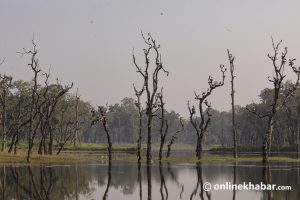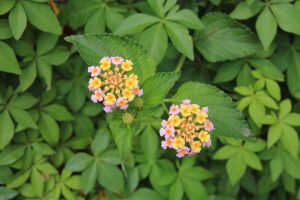The impacts of climate change are undeniable. Yet, when one talks about the impacts, it is not something that we can point out directly, on any given day. However, the impact of any human activities will snowball and it can be seen in the changes in the biological diversity of any place, in the lives of flora and fauna, among other things. Having said that, it is a sign that they need human intervention and active effort to be preserved.
Here are a few species of flora and fauna in Nepal that need attention today to enrich the country’s biological diversity.
1. Red panda
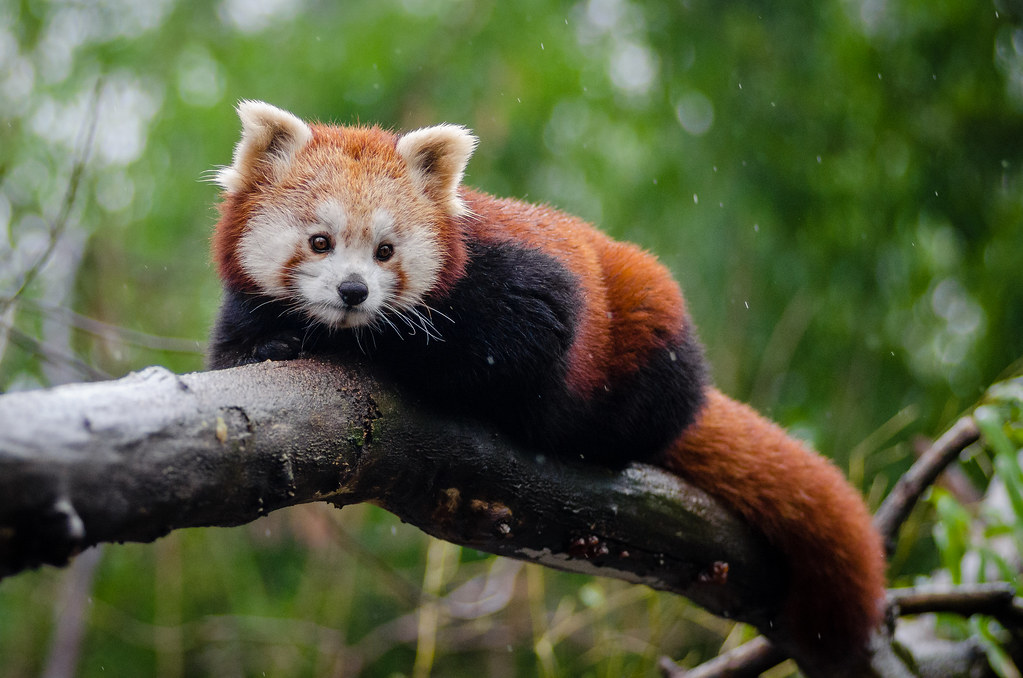
Red pandas, also known as Ailurus fulgens, are endemic to Nepal, Sikkim, Myanmar, and South China, among other places. Nepal’s Langtang National Park, Sagarmatha National Park, Kanchanjunga Conservation Area, and Makalu Barun National Park are home to this species.
Red pandas play a crucial part in the ecology by consuming bamboo, a plant that is not only a concern for people but also for other creatures. They are beneficial to biological diversity because of their enormous size and diet, which requires them to consume a large number of bamboo leaves each day.
Since 2008, these endangered species have been put on the IUCN Red List. Red Panda Network (RPN) intends to restore more than 32 hectares of key red panda habitat by planting over 30,000 natural trees designated as red panda food and shelter species, as well as to assist promote habitat connectivity that can maintain robust red panda populations.
2. Snow leopard

Snow leopards (Uncia uncia) may be found in 12 countries including China, Bhutan, Nepal, India, Pakistan, Russia, and Mongolia.
These endangered species may be found in Nepal’s mountain-protected areas, ranging from the Kanchenjunga Conservation Area in the east to the Shey Phoksundo National Park in the west. However, the country’s greatest known populations are thought to be in the districts of Dolpa, Mugu, Manang, Mustang, and Taplejung.
Snow leopards are a vital indication of the health of their high-altitude habitat, as well as an indicator of the effects of climate change on mountain habitats. Since 1986, when it was originally assessed, the snow leopard has been on the ‘endangered’ list. To conserve snow leopards in Nepal for the country’s biological diversity, WWF Nepal established snow leopard conservation committees as part of a community-led conservation campaign (SLCC).
3. One-horned rhinoceros
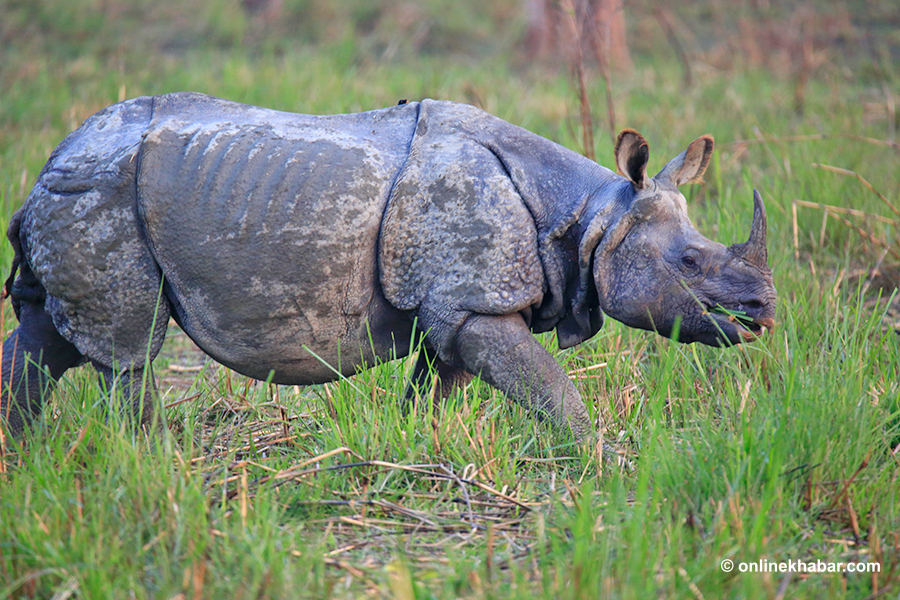
The one-horned rhinoceros (Rhinoceros unicornis) is predominantly found in northern and north-eastern India, as well as southern Nepal. One-horned rhinoceros may be found in Nepal’s Chitwan, Bardiya, Shuklaphanta, and Parsa national parks, as well as their neighbouring territories.
These animals are megaherbivores that play a vital role in their ecosystem and on which other herbivores rely. In 1975, the one-horned rhinoceros was classified as endangered. The Ministry of Forests and Soil Conservation and WWF are relocating rhinos to the park in order to save them. Many national parks, including Bardiya and Chitwan, relocate these species in order to study, count, and conserve as many of them as possible so that the country’s biological diversity would not be hampered.
4. Ganges river dolphin

The Ganges river dolphin, also known as Platanista gangetica, is a mammal found predominantly in India’s Ganges and Brahmaputra rivers and their tributaries.
Dolphins were found in Nepal’s Karnali, Narayani, Mahakali, and Koshi rivers. However, no dolphins have been observed in the Mahakali river since 2000, with just a few sightings in the Narayani river. The Ganges river dolphin is significant for Nepal’s biological diversity because it serves as a dependable measure of the overall health of the river ecology.
The World Wildlife Fund seeks to decrease habitat degradation caused by dams, irrigation canals, and water withdrawals. Efforts to reduce freshwater ecosystem damage and dolphin fatalities caused by fishing bycatch and intentional species extinction are also being done.
5. White-rumped vulture

The white-rumped vulture, commonly known as Gyps bengalensis, is a South and Southeast Asian Old World vulture. Since 2000, it has been categorised as critically endangered on the IUCN Red List.
The Koshi Tappu Wildlife Reserve (KTWR), the Suklaphanta Wildlife Reserve (now turned into a national park), and the Rampur valley are all protected areas for the species. Protecting the species is significant for the biological diversity of Nepal because they prevent the spread of illness by removing the decomposing carcass, which may be a breeding ground for bacteria and deadly pathogens.
6. Spiny babbler
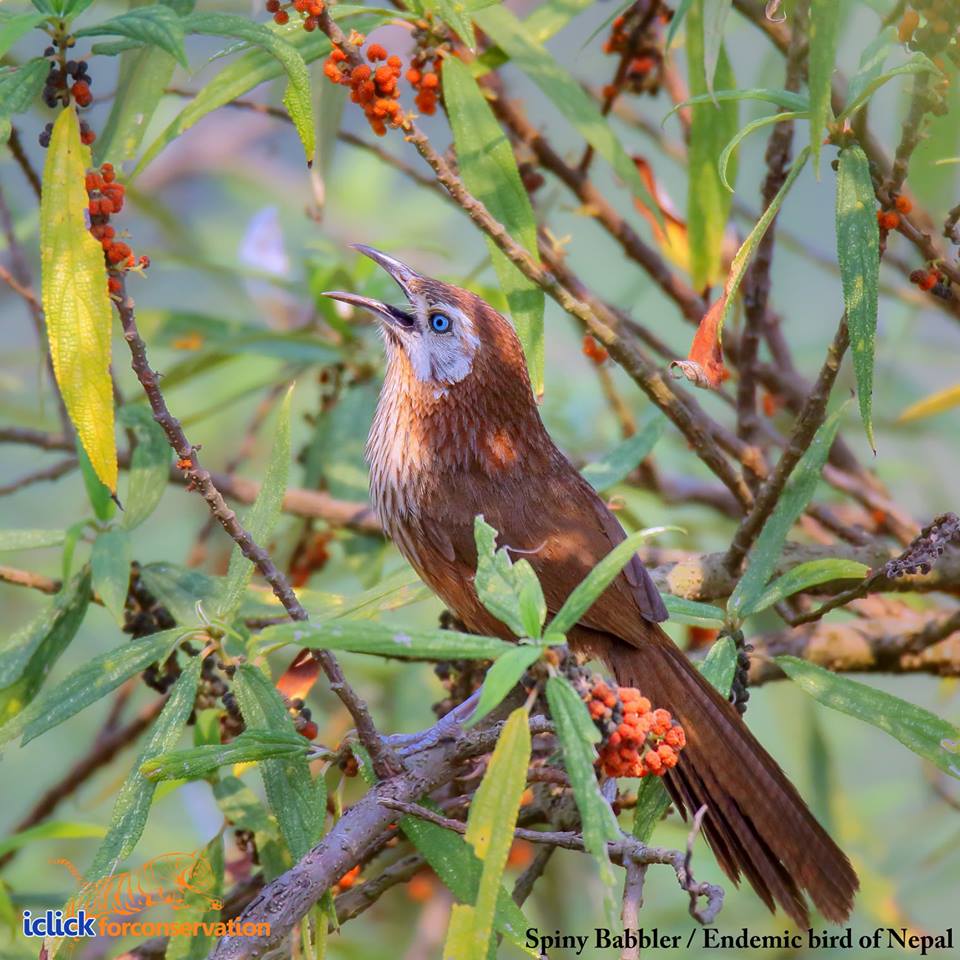
The spiny babbler (Turdoides nipalensis) is a bird species in the Leiothrichidae family. It is exclusively found in Nepal’s middle hills and may be observed in the Kathmandu valley, notably in the Godawari and Phulchoki areas near the city of Lalitpur.
The sole indigenous bird in the nation is the spiny babbler. That is why it is important in the country’s biological diversity status. The Gadi-Siraichuli Forest has been designated as an important bird and biodiversity area (IBA) of international significance by BirdLife International and Bird Conservation Nepal.
7. Asian woolly-necked stork
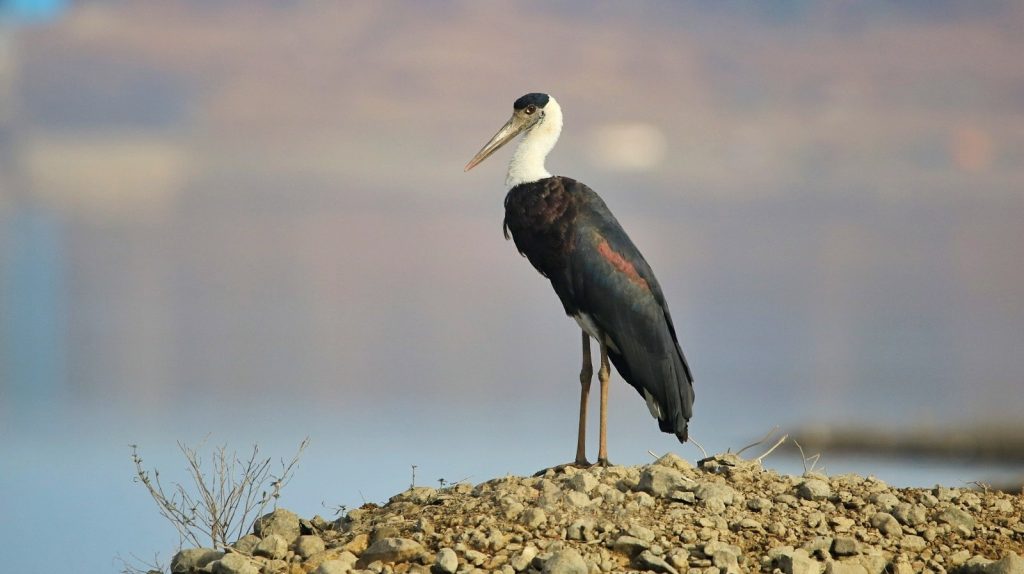
The Asian woolly-necked stork (Ciconia episcopus) is also on the list of endangered species in Nepal. It is a big wetland-dependent bird of the stork family found in South and Southeast Asia. The woolly-necked stork may be found in Nepal’s districts of Chitwan, Kapilvastu, Rukum, Jajarkot, Rupandehi, Dhading, Pyuthan, and Arghakhanchi, among others.
The IUCN Red List classifies the Asian woolly-necked stork as vulnerable. It is significant to our ecosystem and biological diversity because it demonstrates the need to broaden our common conservation goal beyond protected woodland areas.
8. Steppe eagle

Steppe eagles (Aquila nipalensis) are found in Africa and may be found from western to southern Sudan, Nepal, and other places. Steppe eagles may be seen in Nepal near Chobhar areas. The steppe eagle makes a large migration from its entire breeding territory, passing via key migration flyways such as the Middle East, Red Sea, and the Himalayas.
The IUCN Red List assessment for 2015 classified it as ‘endangered’. The Nepal government has recruited 18 expert bird watchers stationed in 18 different locations to count the birds. Every year, the count begins in November and finishes in January.
9. Golden Himalayan raspberry
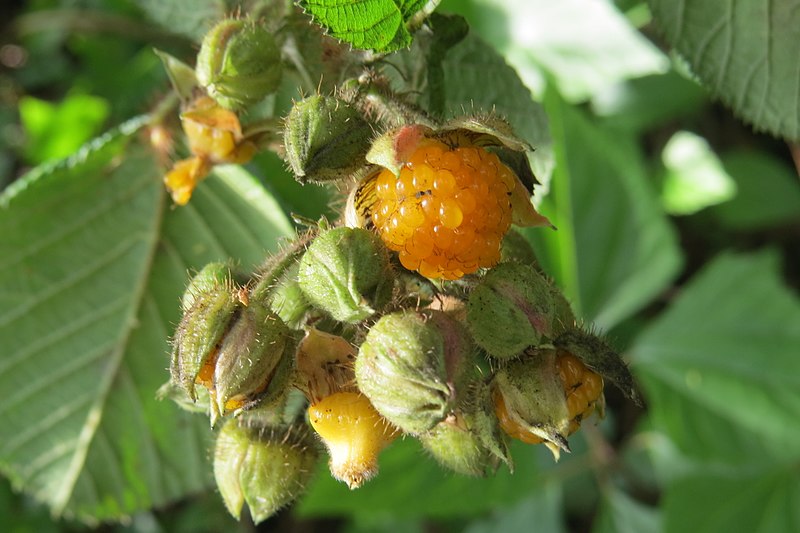
Now, a few plants that are important for Nepal’s biological diversity… Golden Himalayan raspberry, also known as Rubus ellipticus, is a shrub that thrives in open spaces in Nepal’s mountainous regions. It has prickly branches with over-sharp-toothed-edged leaves. Its roots are used to relieve stomach discomfort and headaches in Sikkim, and its fruits treat indigestion. The golden Himalayan raspberry fruits have also been examined for possible antioxidants.
10. Yarsagumba
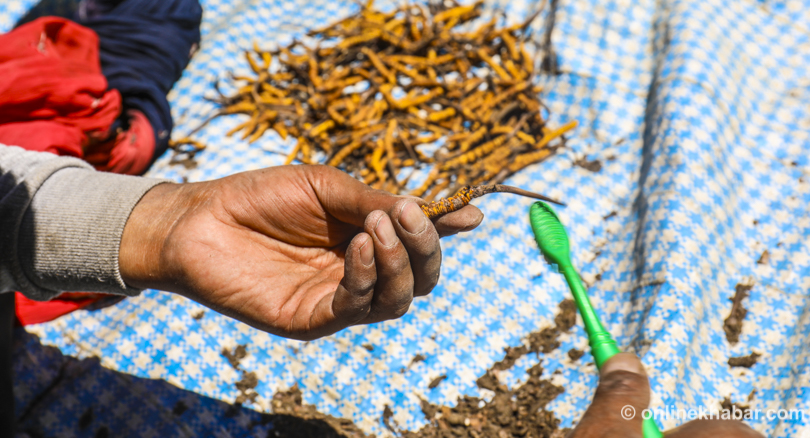
Yarsagumba (Ophiocordyceps sinensis) is found in Bhutan, India, and Tibet. In Nepal, yarsagumba may be found in alpine meadows and pastures between 3,500 and 5,100 metres in Dolpa, Jumla, Mugu, Kalikot, Darchula, Bajhang, and other areas.
Yarshagumba is quite expensive, but it is crucial economically because it is the primary source of revenue for rural people as well as isolated mountain tribes in many high Himalayan alpine areas. It is taken as a source of energy in therapeutic tonics. It has also resulted in societal disputes, particularly about resource access and management.
Since 1999, it has been categorised as an endangered species under the second level of state protection. It is critical not only for biological diversity but for the local economy also, thus the government is raising awareness, identifying essential players, and discussing potential solutions with them.
11. Serpentina

Serpentina (Rauvolfia serpentine) is a medicinal plant of the Apocynaceae family that is on the verge of extinction. It is native to forests in South Asia (Nepal, India, East Pakistan, Bhutan), as well as Burma, Bangladesh, Sri Lanka, Malaysia, and Indonesia.
So far, Rauvolfia serpentina has been documented in 17 districts of Nepal (Banke, Bardiyaa, Chitwan, Dhading, Gorkha, Ilam, Jajarkot, Kavre, and others). Rauwolfia serpentina is a safe and efficient hypertension therapy. Many physicians in India utilised the plant in the 1940s, and it was later used all over the world in the 1950s, and is still taken as one of the important herbs for the herbal treatment.
12. Himalayan yew
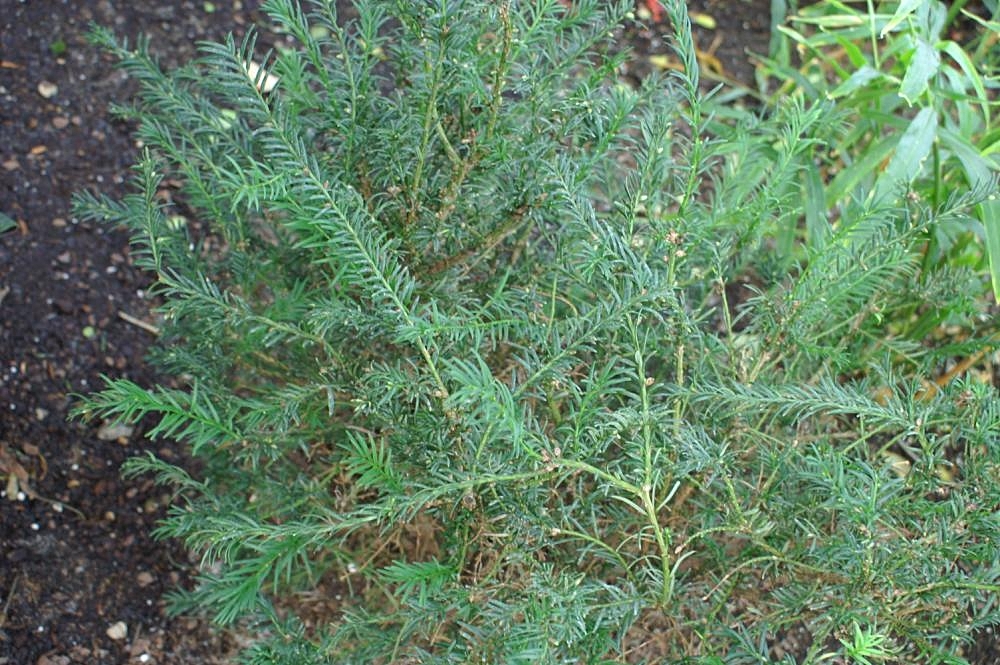
The Himalayan yew (Taxus wallichiana) is a tree endemic to the Himalayas and Southeast Asia.
It is said to be found in Nepal’s central and eastern regions. However, Taxus mairei is only found in the hills around Kathmandu valley in the districts of Kavre, Makawanpur, and Sindhuli.
The Himalayan yew, also known as thunder in the western Himalayas, has significant medicinal and ethnobotanical significance. The plant is essential in traditional medicine, and its components are used to cure common diseases by local inhabitants.
In 2011, the IUCN Red List of Threatened Species was updated. Domestic cultivation and multiplication of the plant, development of the technology for taxol extraction, and evaluation of taxol’s therapeutic potential are all part of the CSIR’s new three-point approach to rescue the yew.








